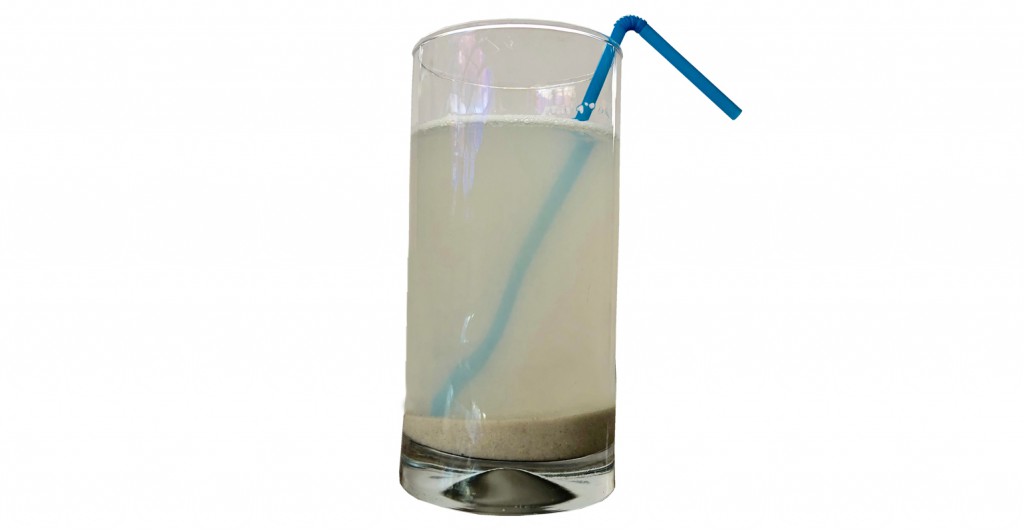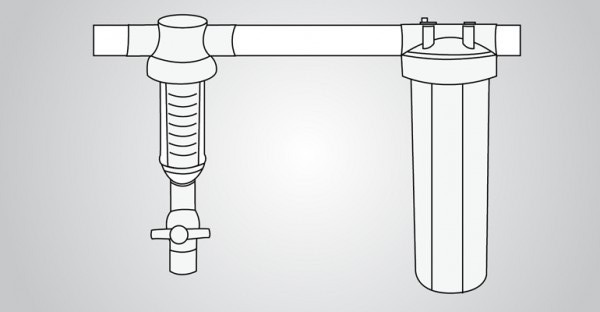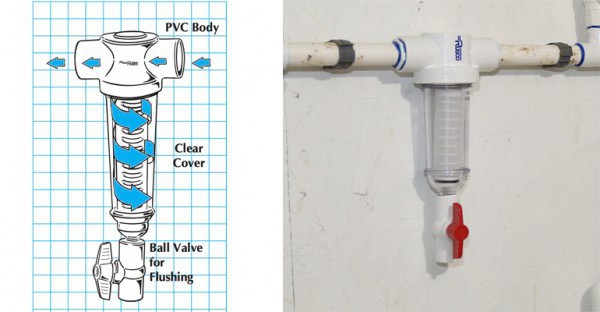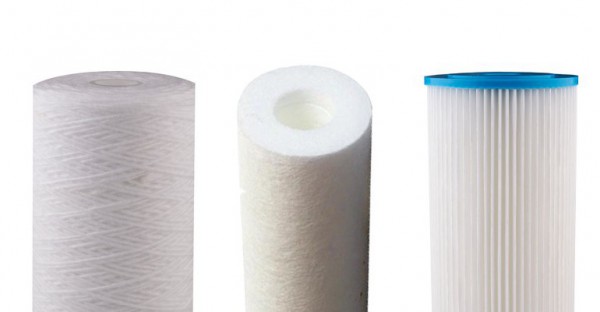
Step-Down Filtration systems improve sediment removal from the water sources used in livestock and poultry production.
Removing the sand, dirt, and organic matter is an essential first step in enhancing water quality. After removing the sediment, the water is further sanitized with chlorine dioxide or bleach to kill any pathogens.

Here are some comparisons of standard mesh sizes and microns. Note the mesh sizes in parenthesis are not economically feasible to manufacture for farm use.
Step-Down Filtration
Unless the water source is extremely sediment free, most farms will benefit from installing a Step-Down system consisting of two filters.

The first step is a filter with a reusable screen between 60 and 140 mesh and easy-to-use flush valve. The idea is to trap the larger sediment, flush it often and prevent these particles from plugging the smaller filter downstream. One of the best examples of a first step filter is the Rusco Spin-Down® filter. The clear housing makes it easy to tell when the filter is full and open the ball valve to quickly purge trapped sediment. The reinforced polyester screen can be cleaned and reused.

The second step is determined by the watering or metering equipment is being used. Here are some recommended filter sizes for various types of equipment.
Poultry drinkers – 20 microns
Swine drinkers – 140 mesh
Medicators – 200 mesh
Evaporative Cooling Systems – 12 to 24 mesh
For hog facilities, the second stage could easily be another flushable filter with a finer 200 or 240 mesh screen. For poultry houses, the second filter is typically a housing style that uses disposable cartridge filters to reach the recommended 10-50 microns. There are several types to choose from:

Cartridge Filters
The most common and least expensive is a string wound filter manufactured with polypropylene cord. The manufacturing process creates distinct layers with looser wraps on the surface progressing to tighter layers near the core. Larger particles are trapped on the exterior to reducing plugging the denser interior layers. It is common for the string layers to separate over time allowing particles bigger than their specified rating to pass through.
A second type is a spun poly or melt blown cartridge made by blowing molten polymer over a spinning core. Known as gradient density filter, the media size gradually gets smaller towards the core. This type of filter maintains its micron rating better than string wound filters.
A third type is a pleated cartridge that is commonly manufactured using a polyester material. Pleated cartridges have more surface area to trap sediment, do not require replacement as often and have a higher flow rate. 20-micron, 4.5″x 10″ string wound filter has a typical flow rate of around 12 gallons per minute compared to a pleated model rated as high as 20 gallons per minute
Smaller isn’t better.
The best advice is to install a filter media with as large as openings as possible that will still perform the task. The larger the opening, the less the screen or cartridge will need to be cleaned or replaced.












 Україна
Україна Méjico
Méjico


